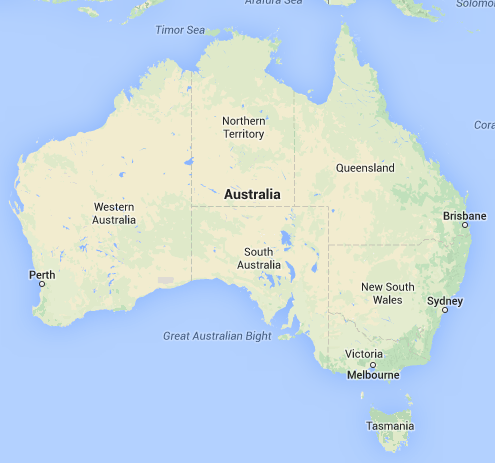Below, you'll find the text and all the extras.
#
At the declaration of the Great War in August 1914, people from all over Australia mobilised to the cause within days. The initial pledge was to send 20,000 men across, but those numbers were quickly exceeded, and the fleet that ultimately gathered in the Indian Ocean, heading across to Gallipoli, carried almost 30,000.
People from every walk of life put their hats in the ring, and not only those signing up to fight. In addition to the men coming forward to join the military effort, there were nurses, doctors, chaplains, and many others who stood up to assist, providing important care to those who went across the sea to the battlefront.
In 1914, the population of the state of Western Australia was a lot smaller than it is now, with 320,000 people living here, or around one seventh of the current population of two and a half million. Western Australia is one of the largest states in the world, and the capital city of Perth is one of the most isolated, being further from Sydney than it is from Indonesia. Perth is now one of the most spread-out cities in the world, sprawling along the Indian Ocean coastline for more than 120 kilometres, but in 1914, it was far more compact.
 |
| Perth, to the west of everything |
The embarkation rolls held by the Australian War Memorial provide a great picture of what life in Perth was like at the outbreak of the war, showing us the places people lived, and the original occupations of those who enlisted.
Statistics tell us that the most common category of people joining up to fight was tradespeople, followed by labourers. Next were farmers, then clerical workers, and then professionals. The miscellaneous category captured many other occupations. While the numbers give us the bigger picture, looking at individuals gives us the finer detail, and brings these characters to life.
David Derrick, for example, was a 30-year-old bushman who worked in the southern forests, felling trees for timber. Aboard a troopship off the Greek island of Lemnos in March 1915, David stole a boat, and according to his charge sheet, rowed it across to an out-of-bounds village. He returned by two in the morning, but he was caught, and sentenced to jail time for the seriousness of his crime. His sentence was commuted, though, to a few weeks of hard labour, finishing just in time for him to land with the rest of his battalion on the beaches of Gallipoli in April.
 | |
| David Derrick's charge sheet (Source: NAA) |
Or Jack Richards, a journalist, and the publisher of the Northam Courier newspaper. At the age of 29, Jack was one of the first to enlist at Blackboy Hill when war was declared in 1914, joining Western Australia's famed 11th Battalion. He landed at Gallipoli, too, and after making it through six months of fighting, he was invalided out with influenza and typhoid. While recovering in Cairo, he wrote a letter in which his adventurous spirit and his knack for telling a story shone through.
It
is exactly twelve months to night since I, and many other Australians, first
trod the streets and viewed the strange sights of a city on the "Near
East," and now, after an absence of nine months, my acquaintance with the
pretentious buildings, the dingy alley ways, and the multi-coloured street
scenes of Egypt's capital is renewed. To the average Australian swaddy who has
but a fleeting, superficial knowledge of the city and its environs, the Cairo
of to-day does not muchly differ from the Cairo of a year ago. But there is a
difference to be noted by anyone who cares to observe carefully. To the soldier
who visits the city bent upon a few hours' enjoyment, the garish lights of the
cafes, the raucous cries of the street hawkers, the jingle jingle of the many
tiny bells on the trappings of the gaily bedecked donkeys, the bright
blue kaftans of the male labourers, the sombre black robed veiled women, and in
the "cafes chantants" the gaudily dressed and bedizened girls, with
their hennah stained fingers and khol darkened eyes, are exactly the same as
when the Australians first invaded Egypt.
Jack was eventually sent home, judged permanently unfit for further service, but that didn't sit well with him. In 1916, he tried to re-enlist in the Australian Imperial Forces, but they wouldn't have him back. So, in 1917, he applied instead to the Australian Flying Corps, and was accepted. He made it back to the war, flying as a pilot on the Western Front, and survived that, too.
 |
| Lt Edward John "Jack" Richards, bottom centre (Source: AWM) |
Women played important roles both before and during the war, too. Like Sister Caroline Allen, who had been operating her own private hospital in the Goldfields town of Kalgoorlie for several years by 1914. Nothing had stopped her in that time, and in between delivering babies and easing people through their dying days, she was often sent in to nurse infectious patients in isolation, when others wouldn't dare. As a result, she weathered a diptheria outbreak in Menzies in 1909 that killed many and saw her hospitalised herself.
 |
| Nurse Allen's close shave with diptheria (Source: NLA) |
 |
| Caroline Allen (right) with future brother-in-law Royce Baesjou at Lemnos, 1915 (Source: Bev Taylor) |
These are just a few of the unique people of Western Australia who left their mark on history. Next time, I'll tell you more about the day that changed them forever- April 25th, 1915.
Beautiful entry, Claire. Keep 'em coming. ;-)
ReplyDelete